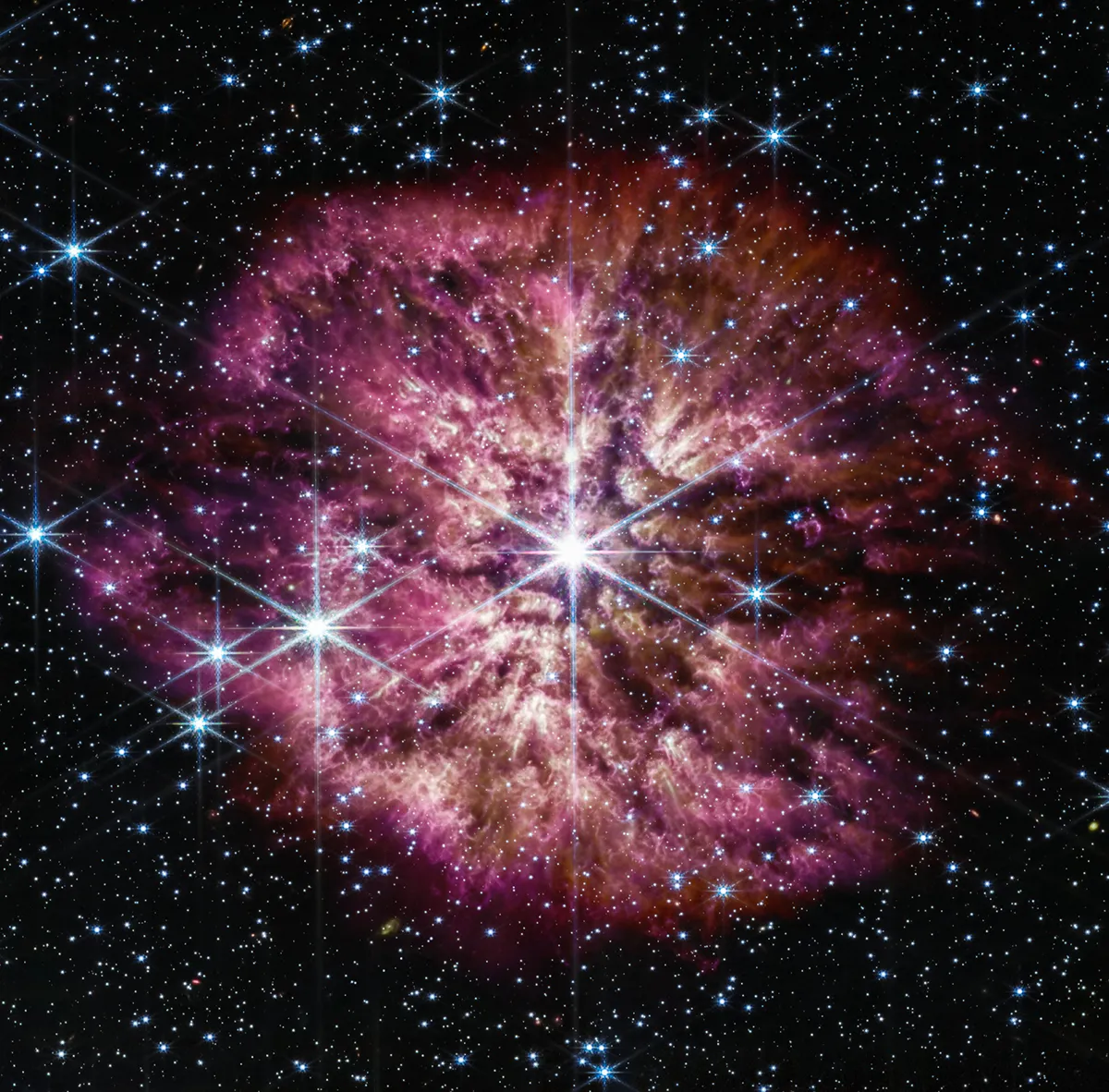The James Webb Space Telescope has captured spectacular image of a Wolf-Rayet star, the final stage in a massive star's life before it explodes as a supernova.
The star, known as WR 124, is located 15,000 lightyears away and can be found in the constellation Sagittarius.

A Wolf-Rayet is a key stage in the evolution of massive stars.
These stars are going through the process of casting off their outer layers of cosmic dust and gas, which cools and produces a beautiful halo that glows in infrared in this new Webb Telescope image.
The Wolf-Rayet stage is rare and brief, making this detection by Webb a key discovery. It was one of the first observations made by JWST, back in June 2022.
WR 124 is 30 times the mass of our own Sun and has so far ejected 10 Suns’ worth of material into space.
Cosmic dust is a key component of the Universe, as it is out of dust that new stars and planetary systems are born.
It can even serve as a platform for molecules to clump together and form the building blocks for life.
But, say NASA, there appears to be more dust in the Universe than current dust-formation theories can explain.
The James Webb Space Telescope is a key observing instrument because its infrared vision can peer beyond cosmic dust and get a glimpse of the internal workings of stars like WR 124, which are ejecting dust into space.
Webb's Near-Infrared Camera (NIRCam) can see both WR 124's bright stellar core and details in the surrounding gas, while its Mid-Infrared Instrument (MIRI) detects the clumpy structure of the gas and the glowing material surrounding the star.
Does ejected cosmic dust survive the final explosive stages of a star going supernova and contribute to the amount of dust in the Universe?
Observations by the Webb Telescope could be key to answering questions such as this.
What's more, because dying stars were responsible for forging the early Universe with heavy elements from their cores - such as those found on Earth today - these observations could also reveal clues about the evolution of the cosmos.
Get the full story at webbtelescope.org.
